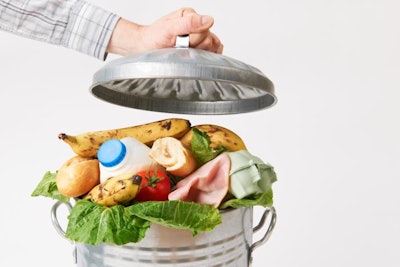
In many countries, leftover food ends up in landfills, representing a waste of precious resources as well as having adverse impacts on the environment. The issue has been widely recognized, but solutions are challenging to identify on a large scale.
However, a pilot scheme was successfully completed on the island of Crete in the Mediterranean last year. It involved the sorting and collection of food waste from four hotels in or near the city of Heraklion, and processing the material to create a safe ingredient for animal feeds. The scheme was extended during the latest busy summer holiday season to include a catering service company and a second tourist resort. Other sites are expected to follow.
Part of the European Union (EU) Action Plan for a Circular Economy, the LIFE Food for Feed (Life F4F) project was set up three years ago to evaluate, through a pilot-scale demonstration, that innovative yet simple technology producing low emissions can safely transform food waste — mainly from hotels, but also more widely from the hospitality sector — into animal feed.
Under the overall EU Action Plan, member states are to reduce significantly the amount of material sent to landfill, and countries were urged to focus particularly on food waste. In 2013, almost all food waste ended up in landfill. By 2016, 5% of the waste was to be separated, and the target for 2020 is 40%.
Solar energy for pasteurization
Among the keys to the success of the program are the adoption of pasteurization for processing the waste, and the application of solar energy. The process ensures a safe final product, and the climate of Crete during the summer tourist season is highly suitable for the generation power from the sun.
Headed by the waste management association of Crete, ESSAK, Life F4F established a specialized pilot plant in Heraklion. This comprises a pre-treatment plant as well as a greenhouse where the material is dried using solar energy. Currently, the drying process lasts 10 days, but the forthcoming additions of more solar panels and a heat pump are expected to shorten this period to just six days.
In addition to ESSAK, partners in the project are the Hellenic Mediterranean University in Crete, Harokopio University of Athens, the Agricultural University of Athens, and the Free University of Berlin, Germany.
Project researchers have been investigating the most appropriate market for the dry product — poultry, pigs or pets.
According to the Life F4F website, the project was scheduled to last 42 months, finishing in February 2020, with a total budget of just over EUR2.58 million (US$2.84 million), and with a subsidy of almost EUR1.46 million from the European Union.
Turning materials previously regarded as waste into animal feeds is not a new idea, nor is it confined to the European Union. Recently reported projects include the use of methane from human waste to produce proteins in India, corn and fruit wastes in Pakistan, and rice hulls in Kazakhstan.
Safety of the final product is crucial to any such waste-to-feed process. Last year, one feed producer in China reported the contamination of some of its feed with the African swine fever (ASF) virus. The feed route is one of the possible means for the transmission of the virus in the current ASF epidemic in Asia.

















